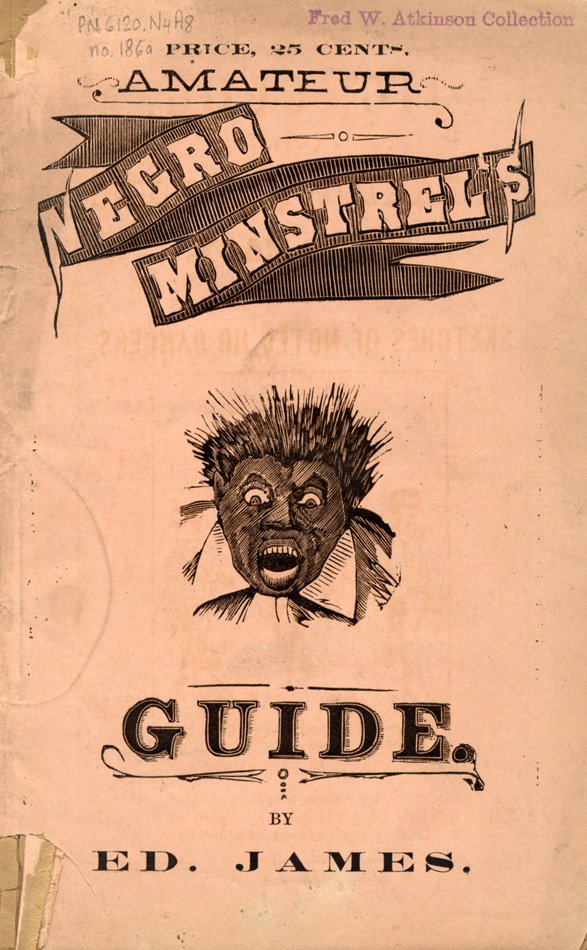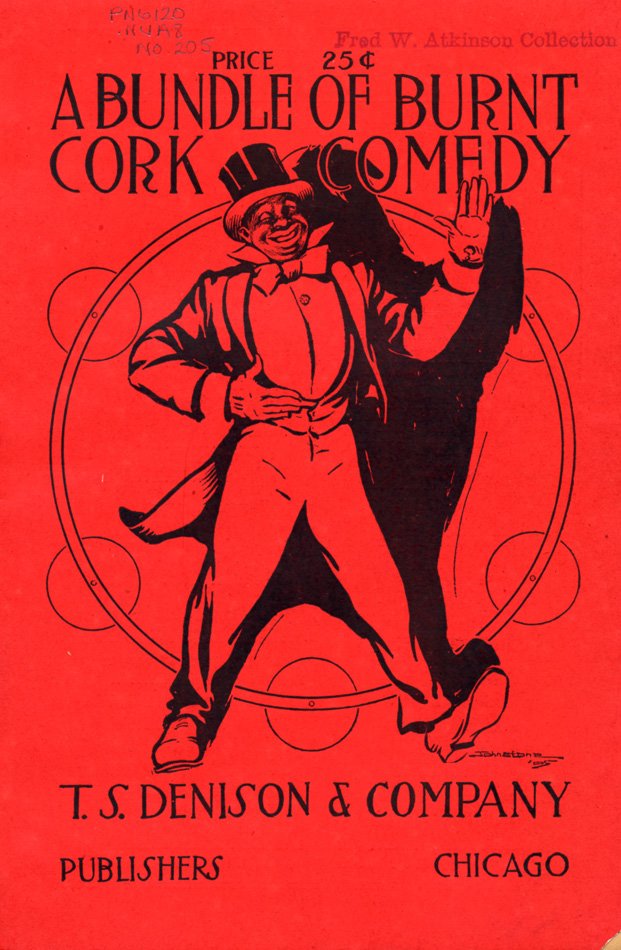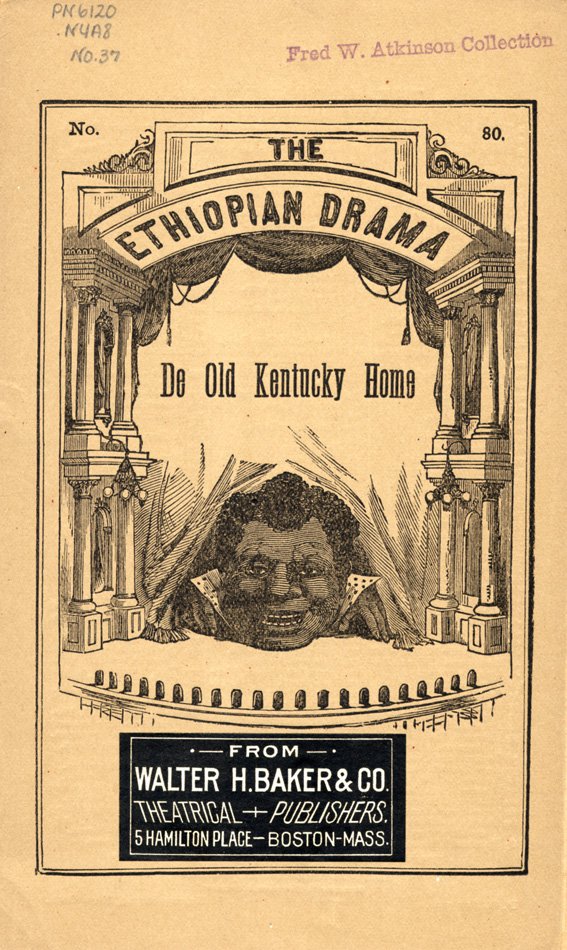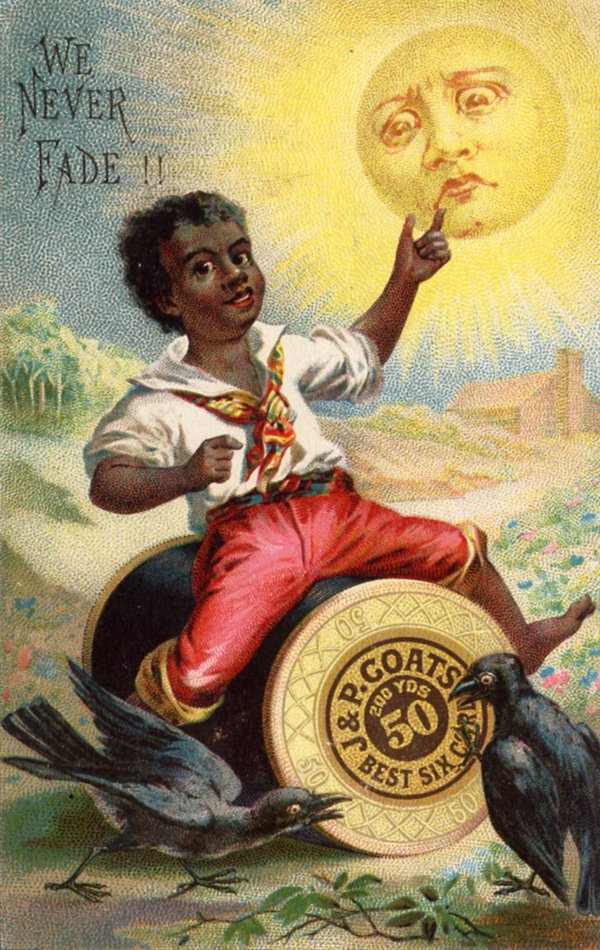The Blackface Industry
Sales generated from minstrel show paraphernalia like joke books and amateur blackface kits provided supplemental income to the massive "mammoth" minstrel companies that toured the United States after the Civil War. They also transformed the blackface mask from a disguise worn by performers to an image made by machines. The evolution of jokebooks from the 1850s to the 1920s shows publishers investing more money and care in the physical appearance of the book—and updating the blackface brand to the sleek silhouette of modernist commercial design.
Ethiopian Drama
Ethiopian Dramas were creations of the pulp publishing industry rather than minstrel troupes. Though they were often finely designed, the minstrel decorations in these plays were lithographed templates that equated the blackface caricature with the image of African Americans in a new mass medium of commercial print.
Blackface Machinery
The target of several Ethiopian Dramas was modern technology, especially Thomas Edison's phonograph. Here the farce lays in juxtaposing the backwards "darky" with the mechanical novelty, often revealed to be a fake. Industrial manufacturers used these images as foils to sell mass produced things like sewing machines and chemical dyes.




